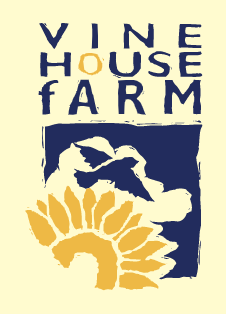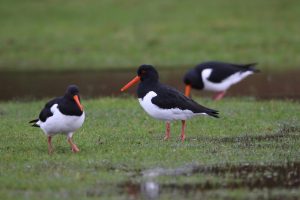
The dry weather in late April and early May enabled us to complete all our cultivating and drilling on time. However the first 10 days in May were 10 days we could have done without – the farm, our gardens, ourselves and the wildlife didn’t want those cold drying winds. However, we are now into summer weather, have had good rainfall and everything has been growing.
There are very few growers of red millet in the UK, probably because it yields much less than white millet. I do remember that we used to have a better strain of red millet, so last autumn I set off to find some better seed. I contacted a grower via the internet in Colorado, USA who grew it. He said that the red millet he grew only yielded about 10% less than white millet and that he would sell me some. The problem of course was how to get the seed here. Fortunately, a contact of ours loads sunflower hearts from South Dakota and it was put in the back of a container of sunflower hearts that was coming to the UK. It was sown mid-May and is up and growing now.
June is the time when our potato harvester and combine get a thorough going over. It is important that they are in good working order for the harvest, as any breakdowns can be very expensive due to men being stood around doing nothing, and it could be raining by the time the machine is repaired. The potato harvester has been back to Grimme, the manufacturers, for a modification as we had to repair it two or three times in the same area last year.
June is also the time of year when we walk through the crops roguing those plants that we don’t want to go to seed, especially in our organic crops. There is a saying, ‘one year’s seeding means seven years weeding’. Most of the organic crops are grown for seed and so we need to walk through them taking out wild oats, docks and charlock. Wild oats are not easy to dress (clean) out of wheat, docks are not easy to dress out of clover and grass, and charlock is impossible to dress out of stubble turnips.


The cold weather in early May prevented insects from hatching out and nearly all of the first broods of Tree Sparrows failed. They could not find the insects to feed their young. A few small broods survived that were close to oil seed rape crops. Now, when I watch a field of oil seed rape, birds fly to it from all directions to get food – it really is the best crop for birds. Blackbirds will fly 300 yards to it and come out of it with their beaks laden with food and now I can hear Blackbirds singing in the middle of an oil seed rape fields meaning that they are nesting there too. They also fly to get food from the wild bird cover crops that we grow, they consist of mostly brassica species and oil seed rape is a species of brassica. We grow these wild bird cover crops under our HLS, a scheme run by Natural England to help bolster our wild bird populations.
Farmers have only been growing oil seed rape for the past 45 years as a seed crop, before that it was called coleseed and was grown for sheep to eat in the autumn and winter. The first species to nest in it was Reed Buntings, Reed and Sedge Warblers soon followed. Skylarks nest where they can find a bare patch in it. Whitethroats and Linnets nest in the canopy and the latest birds I have seen nesting in it are Blackbirds, Dunnocks and Wrens.
Sand Martin numbers have swelled during the last month and we are now up to 100 holes, in the heap of gravel that we have at Langtoft fen, the same number as last year. We were wanting to use this heap of gravel this spring, so last autumn we enlarged another pond and extracted some more gravel and now Sand Martins have started nesting in the second heap. Fortunately we had already taken the gravel we wanted to use.
Every year during May I do a lot of walking, recording our breeding birds. I cover the same ground each year, at the same time of day and taking the same time over each route. There have been some lovely mornings this May and I have some interesting results this year. At a time when our farmland birds are in general decline, Reed Bunting, Sedge Warbler and Skylark numbers are up significantly and I put that down to the wet summer. They also showed an increase in 2008 after the wet summer in 2007. Reed Buntings have shown a 100% increase in numbers for two years in succession! They will have benefited from my winter and spring feeding on the farm, as I feed hundreds of them. Skylarks do not come to my feeding areas and Sedge Warblers are not here in the winter. Reed Warblers, a similar species to Sedge Warblers, have actually declined and that I put down to where they nest – in reeds along the dyke and drainsides. During wet weather these reeds bend over and some of the nests will lose their contents. If anyone else has any other thoughts or theories give me a call.
Lapwings did not enjoy the dry April weather and into May, the worms and slugs were not coming to the surface. I have not seen any well grown chicks yet. Most of the adults are still on the fields and have laid more eggs.
Talks, Walks and Events
Sunday 11th June Open Farm (Saturday 10th &) Sunday
at Park Farm, Thorney PE6 0SY
Saturday 17th June Farm Walk
Saturday 5th August Sunflower Farm Walk
Saturday 12th August Sunflower Farm Walk
Sunday 13th August Sunflower Farm Walk



